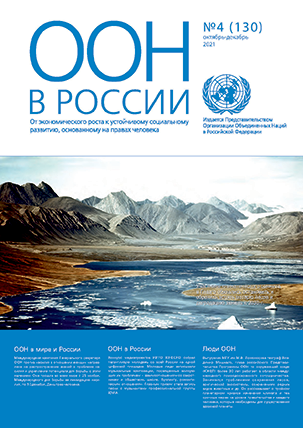Goal 9: Build resilient infrastructure, promote inclusive and sustainable industrialization and foster innovation
A Sustainable Future of Infrastructure
By Grete Faremo
UNOPS has a key role to play in building resilient infrastructure, promoting inclusive and sustainable industrialization and fostering innovation
Investing in basic, sustainable infrastructure is essential to improving the living standards for communities worldwide. When we speak of the basics, we mean the fundamentals. These are issues which comprise common human needs all over the world. Just because these are basics, however, does not mean that addressing such concerns correctly is a simple task. In the case of infrastructure it requires coordinated, long-term planning that stretches across geographic, political and cultural boundaries.
For too long infrastructure has been understood and evaluated solely by the presence of a building or a completed roadway. We know, however, that a hospital cannot function without a solid waste system, and a waste system, in turn, cannot function without the acquired and applied knowledge, institutions and underlying resources necessary to manage it. Yet when we talk about infrastructure, this understanding beyond the immediate is still too often overlooked. We need a shift in this thinking.
Quite simply, without infrastructure we would not have a healthy society. Essential services such as health care and education require infrastructure. For communities and businesses to operate and thrive, they need access to goods and markets. Infrastructure must respond to societal needs, but it also should be evaluated for its long-term outcome, including the resources required to ensure longevity.
Many of the proposed sustainable development goals (SDGs) will require solid, functional and sustainable infrastructure if they are to be reached. Reliable forms of energy, the availability of potable water, education, safety and security, social and economic services—all of these are made possible through resilient infrastructure.
However, this very reliance creates significant challenges. We must consider the bigger picture, both in terms of the opportunities and the risks. We must support development, but what if something goes wrong? What is the environment in which we are operating? What are the issues in today’s world? With climate change, for example, comes an increase in the frequency of natural disasters. So sustainable infrastructure not only supports development, but is essential for post-disaster recovery as well.
With our mandate within the United Nations system to lead on infrastructure, and our 20 years of experience developing infrastructure projects, the success of any infrastructure goal requires learning the lessons from practical experiences. We have this at the United Nations Office for Project Services (UNOPS). The international community and industry must work together to ensure that investment in infrastructure considers risk, placing security and resilience at its core.
At UNOPS our experience is broad and built upon partnerships. We work with the United Nations system, Governments, non-governmental organizations and the private sector. Our model encourages private investors to prioritize sustainable development. And right now, increased investment is needed to improve the security and resilience of critical infrastructure in developing countries.
The destruction caused by recent natural disasters in communities around the world highlights the need for a risk-based approach to sustainable infrastructure. Our work covers these areas. For example, in response to the 2010 earthquake in Haiti, UNOPS supported the United Nations Development Programme and the International Labour Organization in a wide range of post-disaster activities, including the construction of shelters for the affected populations and managing the vast quantities of debris. We have also supported the Government of Brazil in constructing earthquake and cyclone resistant community hospitals, which incorporate environmentally friendly infrastructure such as external solar lamps and rainwater harvesting. There are many more such examples.
Existing infrastructure is also an important consideration. Assessments should be conducted seeking to understand how the structures already in place can be serviced and repaired. How do various developments interact with existing water treatment facilities, roads, bridges and utility grids, wherever they are in the world? It sounds simple, yet in many cases and in many parts of the world this factor is of ten overlooked.
Where risks cannot be eliminated, we need to improve management and mitigation. Disaster risk reduction aims to reduce the damage caused by natural hazards through prevention. There is a direct correlation between risk and resilience—a reduction in risk contributes to an increase in resilience. In turn, effectively managing risk in our projects will contribute to more sustainable infrastructure development. This connection also needs to be better understood.
Whereas the resilience of infrastructure can be seen as the ability to absorb stresses caused by natural hazards—for example, how a building responds to an earthquake—the sustainability of infrastructure looks at the impact of that building on the environment. Sustainability helps reduce the footprint of a development, while resilience allows infrastructure to better withstand environmental impacts.
There are many principles and complexities within these issues. Ultimately, what is clear is that infrastructure systems must be developed in a way that supports essential services over the long term, beyond political cycles.
Without consideration of all of these factors, sustainable infrastructure will always be just a horizon we never reach. Which is why as we set the future agenda, we must not forget that truly sustainable development is reliant on its foundations, on the infrastructure upon which success can be built.
First published in the UN Chronicle, Department of Public Information, United Nations.
Grete Faremo is Executive Director of the United Nations Office for Project Services.

